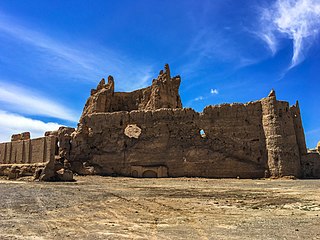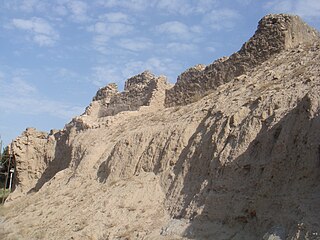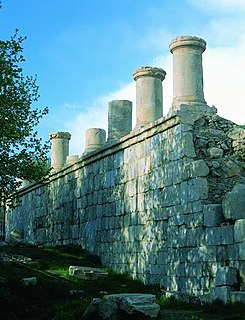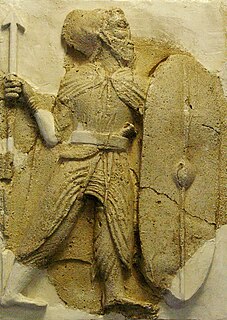 W
WPāpak Fort or Babak Castle, ″Ghal’eh-e Baz″ is a large citadel on the top of a mountain in the Arasbaran forests, 50 km from Ahar, one parasang from Ardabil, 6 km southwest of Kalibar City in northwestern Iran. According to Ibn al- Nadim, it was the stronghold of Javidhan and Babak Khorramdin, the leaders of the Khurramites in Iranian Azerbaijan who fought the Islamic caliphate of Abbassids. The fort was conquered and ruined by Afshin′s army on 837.
 W
WNaryn castle or Narenj Castle is a castle in the city of Nain, Iran, and is one of the attractions of Nain County. This castle was built by the Parthian Empire.
 W
WNisa was an ancient settlement of the Parthians, located near the Bagyr neighborhood of Ashgabat, Turkmenistan, 18 km southwest of the city center. Nisa is described by some as the first seat of the Arsacid Empire. It is traditionally assumed to have been founded by Arsaces I and was reputedly the royal residence of the Parthian kings, although it has not been established that the fortress at Nisa was either a royal residence or a mausoleum.
 W
WQaṣr-i Abu Naṣr, Qasre Abunasr, or Takht-e Sulayman is the site of an ancient settlement situated in city of Shiraz in the Fars province of Iran. According to archaeological studies the fortress was built during the Parthian period, and was an important and strategic location in the Sassanid Empire. Archaeologists have found various artifacts and coins belonging to various historical periods, such as the Achaemenid, Seleucid Empire, Parthian and Sassanid. This site is recorded in an Iranian historical list from 1932 as "Takht e Sulayman". When Muslims invaded Iran, and conquered it, they called this palace "Father of Victory"
 W
WRashkan Castle was a castle in Tehran Province in northern Iran. It was located near Cheshmeh Ali, Shah-Abdol-Azim shrine and Fath Ali shah inscription (Cheshmeh-Ali). The castle was intended to hold Rey, Iran. Rashkan castle was erected with plaster of lime and ashes or sand with stones. It was built during the Parthian rule of Persia.
 W
WThe Anahita Temple is the name of one of two archaeological sites in Iran popularly thought to have been attributed to the ancient deity Anahita. The larger and more widely known of the two is located at Kangāvar in Kermanshah Province. The other is located at Bishapur.
 W
WThe Temple of Gareus is located in Uruk in Iraq and probably dates to c. 110 AD. It dates back to the Parthian period, and is among the few surviving religious structures of Parthian date in Babylonia. The temple was made of fired bricks and consisted of a single room. The dimensions are 10.7 x 13.7 metres. The original height of the structure is unknown, but the surviving ruins of the structure are over eight metres high. The exterior was decorated with four half-columns with Ionic capitals and vaulted niches in between. In front of the temple's facade, there was a series of six columns. The structure was originally covered in plaster and decorated with a frieze depicting mythical creatures.
 W
WZahhak Castle is a castle in Hashtrud, East Azerbaijan Province, Iran. It is named after Zahhak, a figure in Persian mythology. According to various experts, it was inhabited from the second millennium BC until the Timurid era. It was first excavated in the 19th century by British archeologists. Iran's Cultural Heritage Organization has been studying the structure in 6 phases.